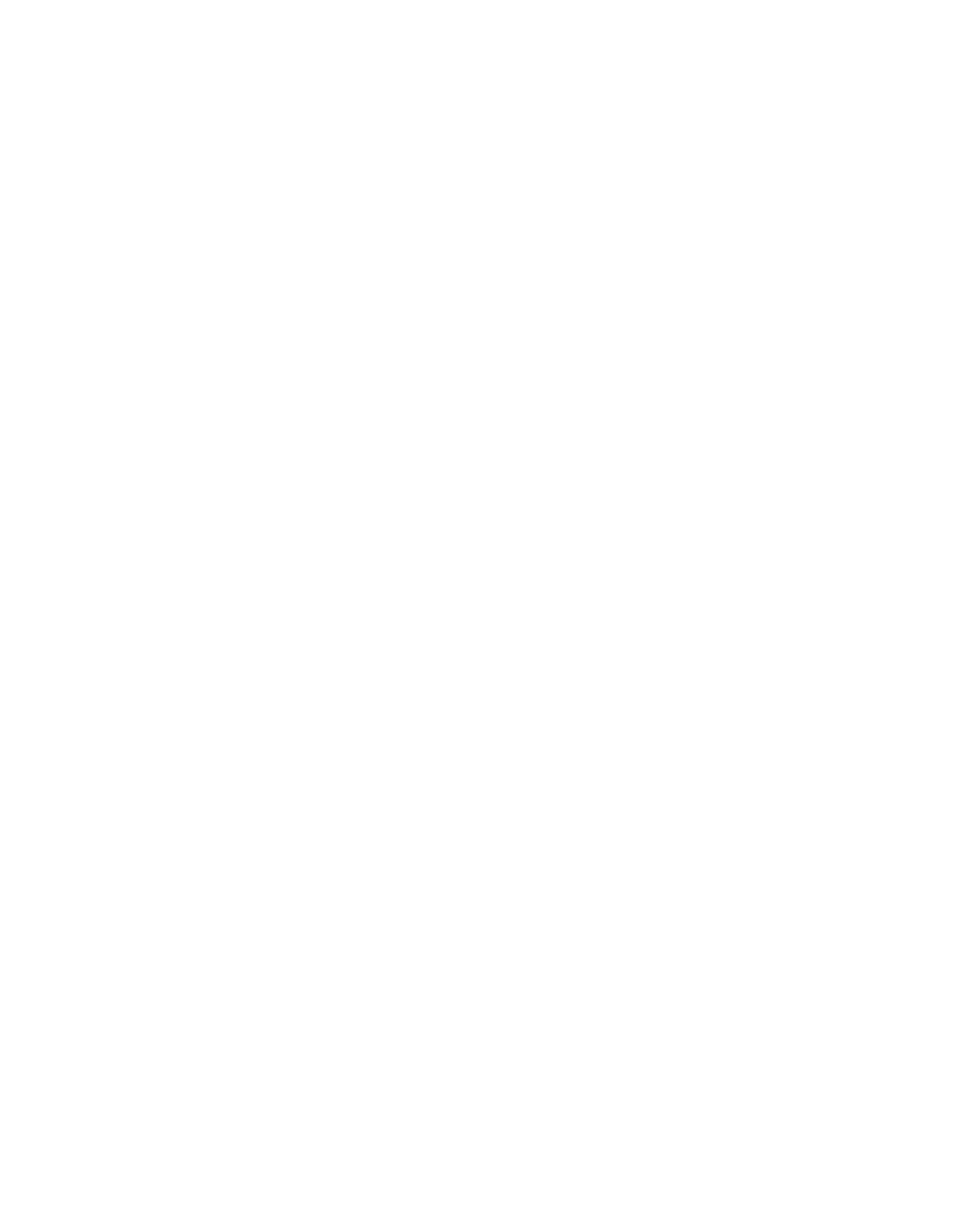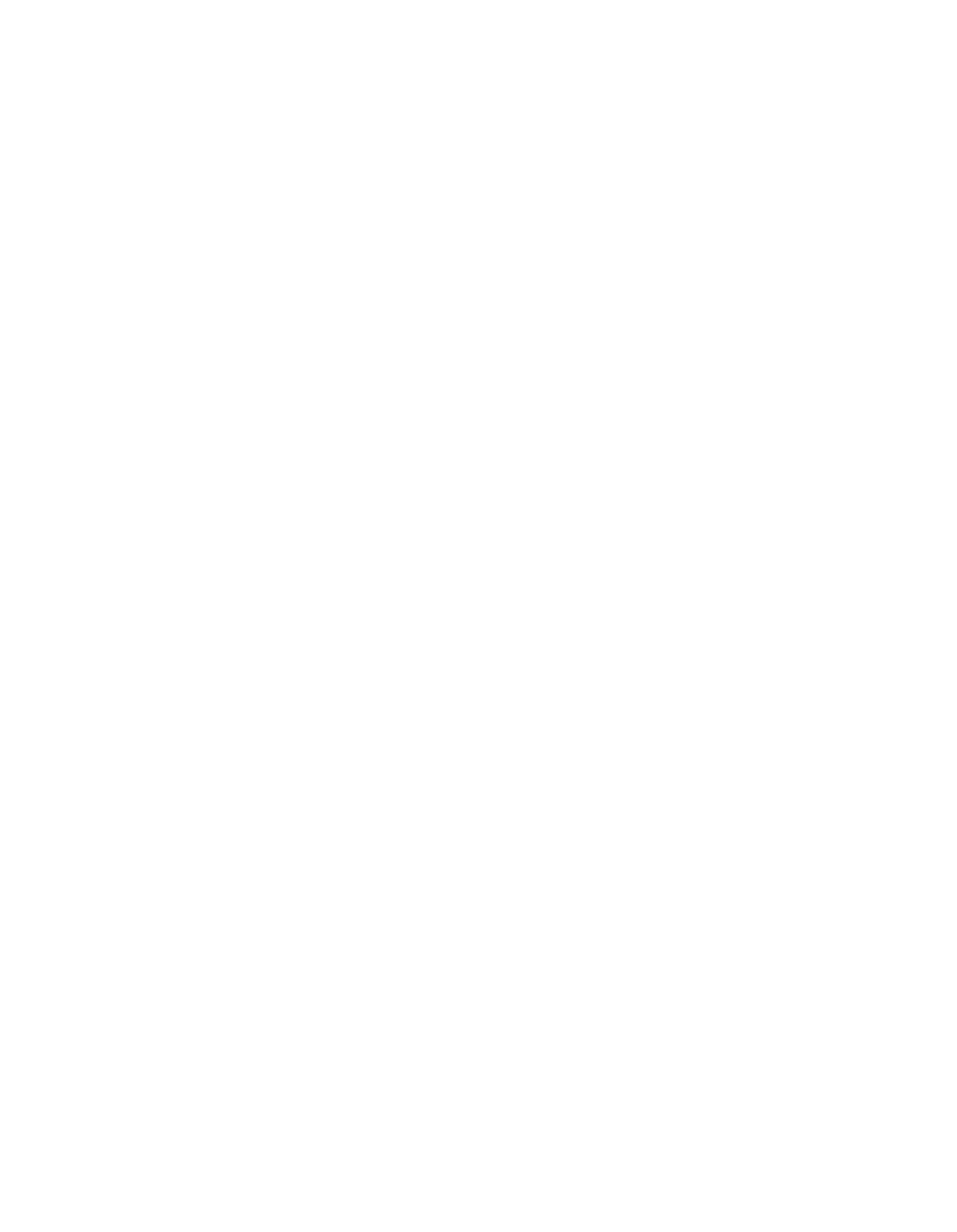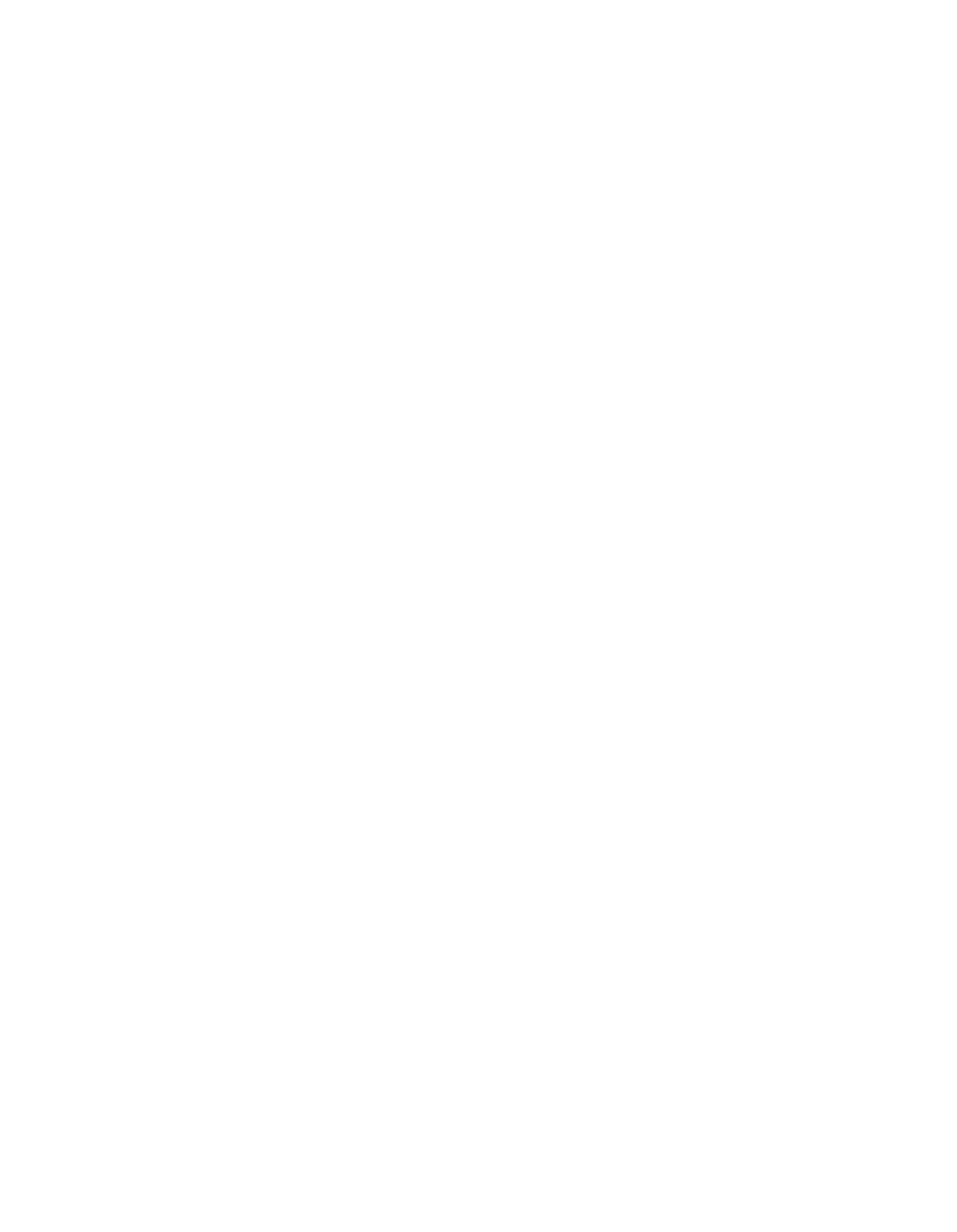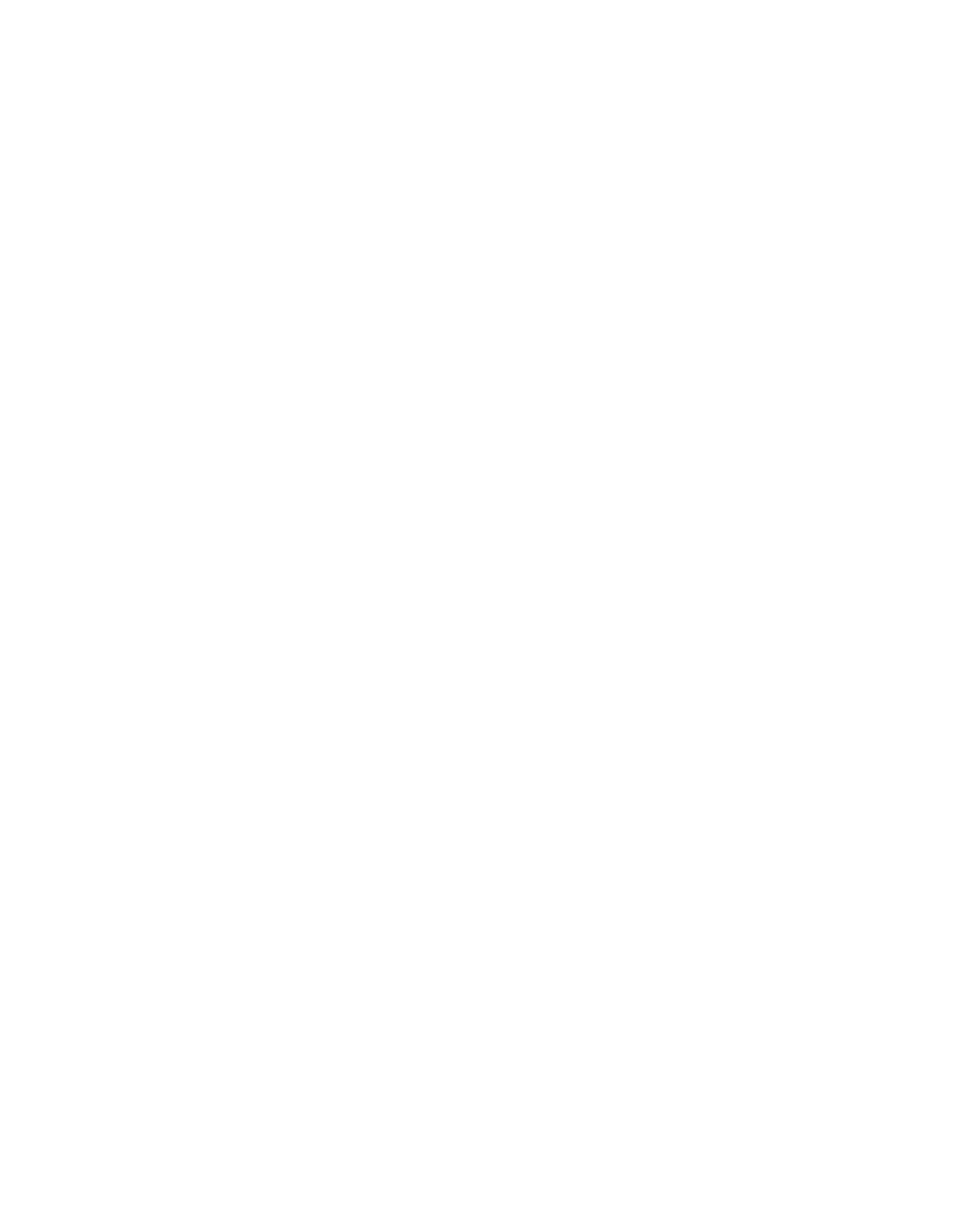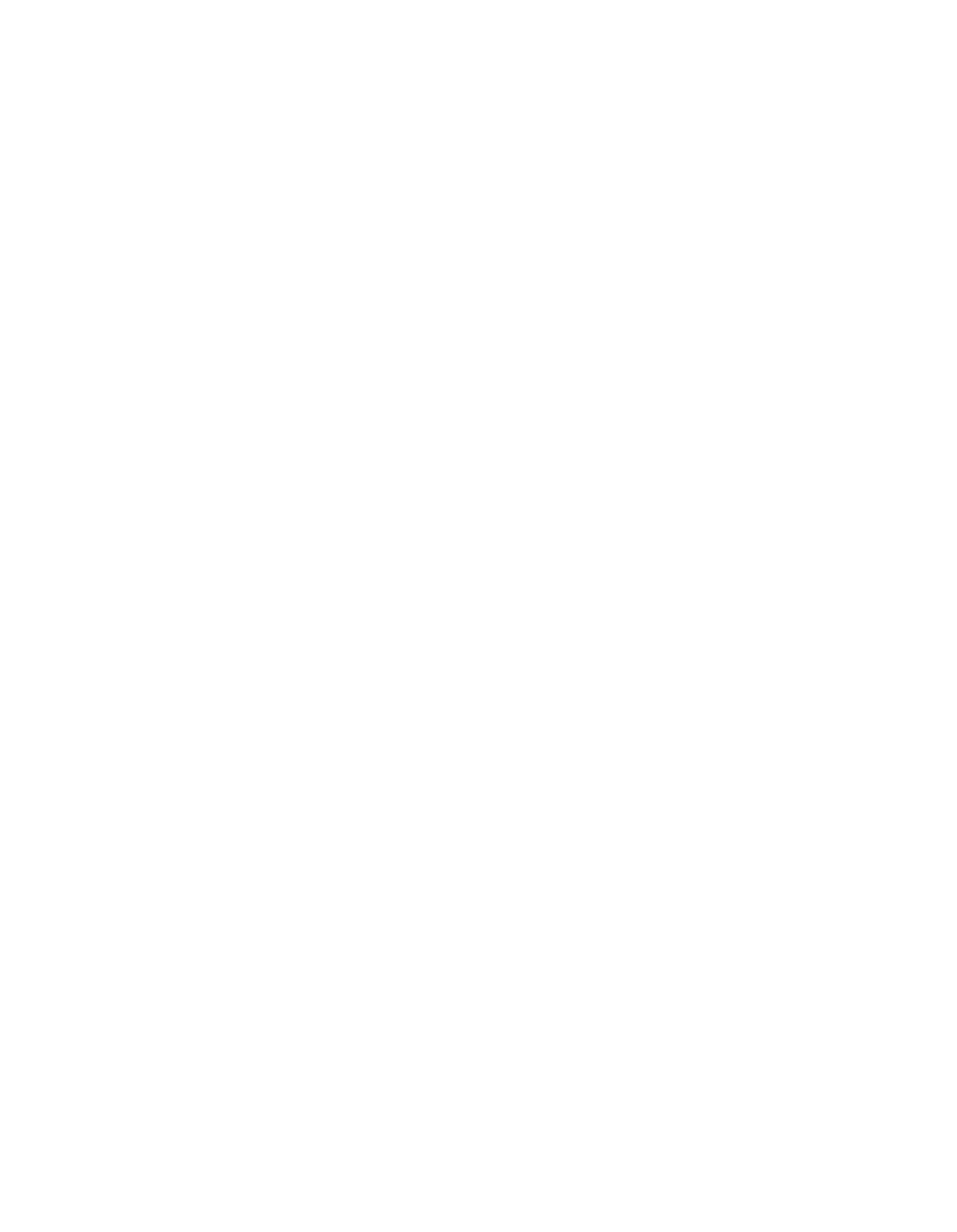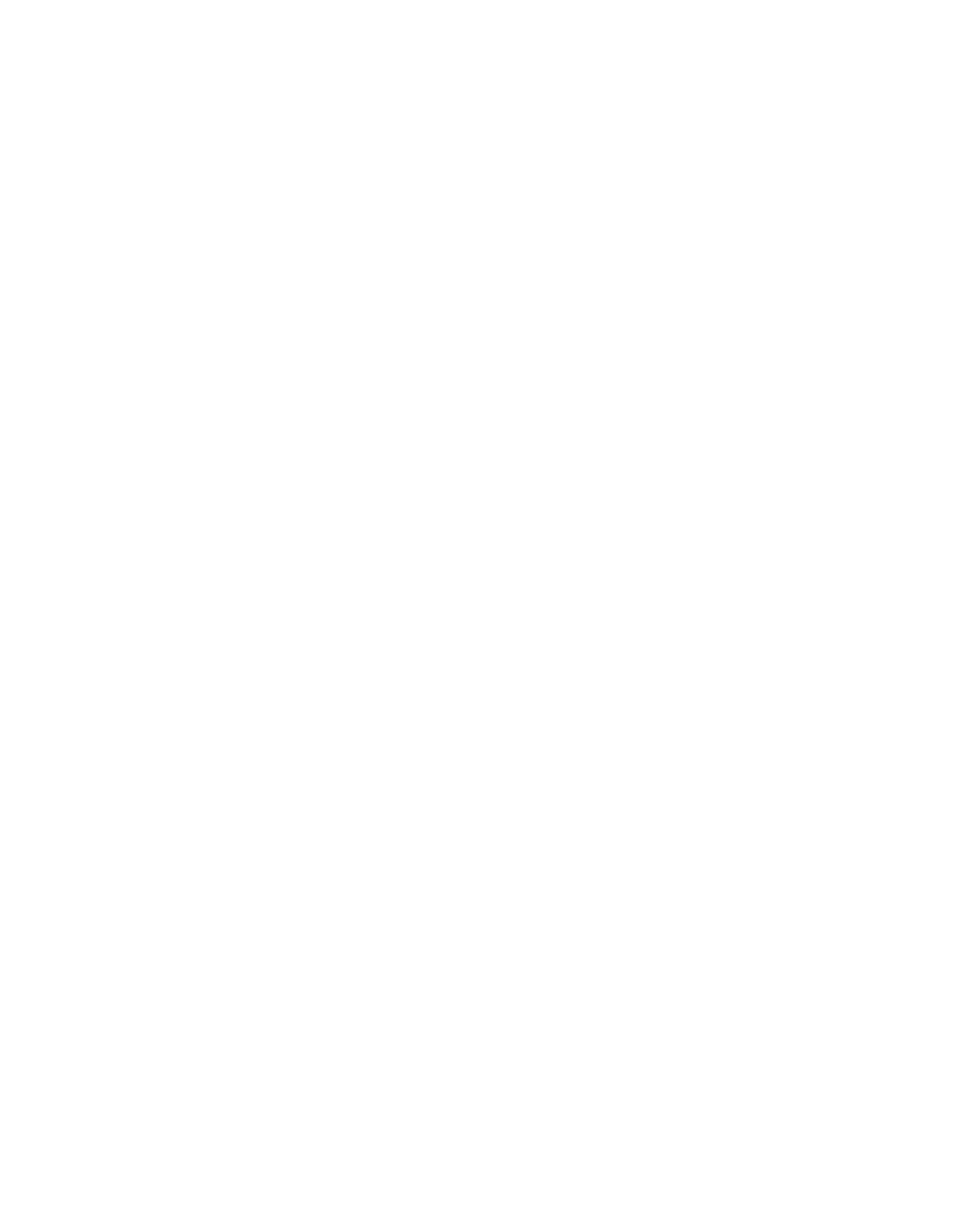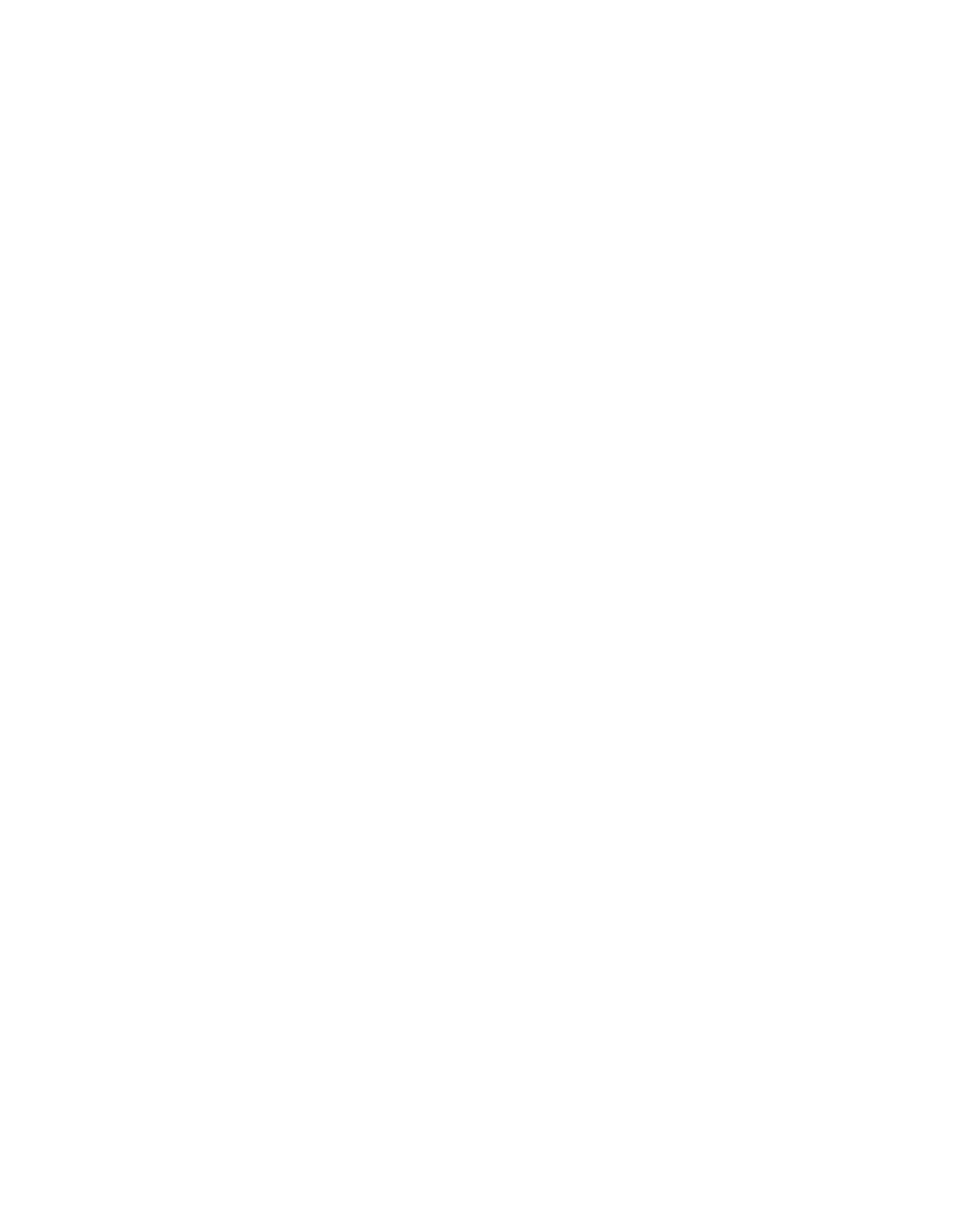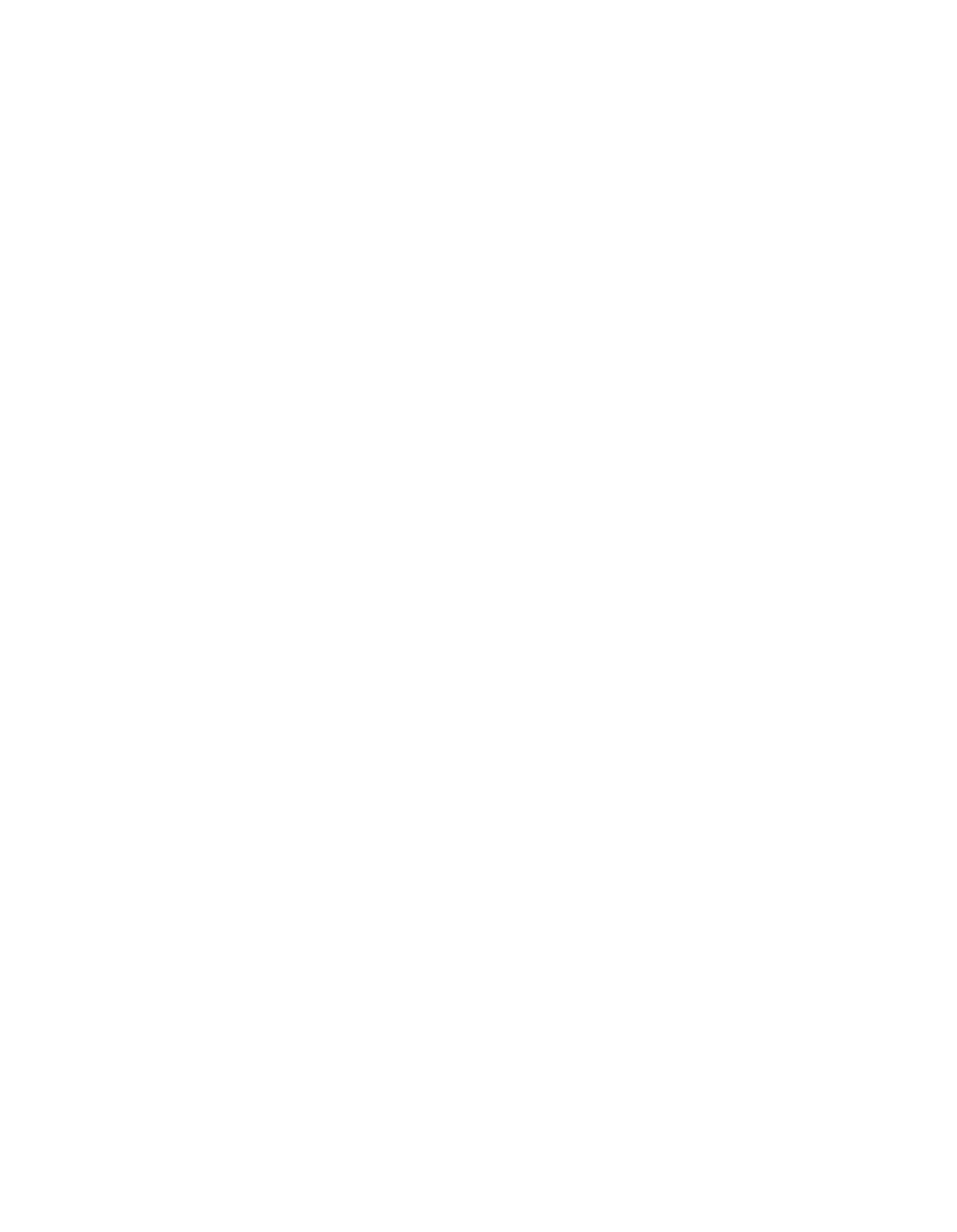ILLINOIS POLLUTION CONTROL BOARD
December 2, 1993
IN THE MATTER OF:
)
SMALLER SOURCE PERMIT RULES:
)
R93-11
AMENDMENTS TO 35 ILL. ADN. CODE )
(Rulemaking)
PARTS 201 AND 211
Adopted Rule.
Final Order.
OPINION AND ORDER OF THE BOARD (by R.C. Flemal):
By today’s action the Board adopts regulations implementing
the small-source permit provision of the State’s air pollution
permit program. The small—source permit provision is at Section
39(a) of the Illinois Environmental Protection Act (415 ILCS 5/1
et
seq.~
(Act) as added by P.A. 87_l2131, effective September
26, 1992, and amended by P.A. 88—464, effective August 20, 1993.
The provision is as follows:
After January 1, 1994, operating permits issued under
this Section by the Agency for sources of air pollution
permitted to emit less than 25 tons per year of any
combination of regulated air pollutants, as defined in
Section 39.5 of this Act, shall be required to be
renewed only upon written request by the Agency
consistent with applicable provisions of this Act and
regulations promulgated hereunder. Such operating
permits shall expire 180 days after the date of such a
request. The Board shall revise its regulations for
the existing State air pollution operating permit
program consistent with this provision by January 1,
1994.
The Board’s responsibility in this matter arises from the
Act, wherein the Board is charged to “determine, define and
implement the environmental control standards applicable in the
State of Illinois”2. More generally, the Board’s rulemaking
charge is based on the system of checks and balances integral to
Illinois environmental governance: the Board bears responsibility
for the rulemaking and principal adjudicatory functions, whereas
the Illinois Environmental Protection Agency (Agency) is
1
P.A. 87-1213, in addition to establishing the small—source
provision, also established the operating permit program for
major sources found at Section 39.5 of the Act and required by
Title V of the Clean Air Act Amendments.
2
Act at Section 5(b).
—2—
responsible for carrying out the principal administrative duties.
The latter’s duties include administering any regulation that may
result from today’s action.
PROCEDURAL HISTORY
This matter originated before the Board on April 2, 1993
upon filing by the Agency of a proposal for rulemaking.
Beginning in October 1992 and prior to filing its proposal
with the Board, the Agency conducted outreach sessions with
persons potentially affected by the proposed rules. Response
from these sessions was used by the Agency to help frame the
proposal before the proposal was submitted to the Board.
(Statement of Reasons at p. 5-6).
Hearings were held May 25, 1993 in Chicago and May 26, 1993
in DeKaib before hearing officer Michelle Dresdow. Participants
at the Chicago hearing in addition to the Agency included
Maribeth Flowers of the City of Chicago, Raymond Bodnar of the
Illinois State Chamber of Commerce, Victor A. Denslow of Chemical
Regulations Services, and Mary Ross of the Sierra Club.
Post-hearing public comments were filed by the City of
Chicago and the Agency. The City of Chicago expressed it support
for the proposal. The Agency recommended minor amendments to its
original proposal. There was also need in the post—hearing
period to allow a companion Board rulemaking in which Part 211
was undergoing extensive modification to proceed to the point
where today’s Part 211 amendment could be framed in context.
By order of July 22, 1993 the Board adopted the Agency’s
amended proposal for first notice. Publication occurred at 17
Ill. Reg. 13358, August 13, 1993.
Three public comments were received during the post—first
notice comment period. The Illinois Department of Commerce and
Community Affairs (DCCA) noted that the amendments will impact
small businesses and deferred to the findings from the record
before the Board. (PC #3.) The Administrative Code Division of
the Office of the Secretary of State identified certain changes
needed to bring the form of the amendments into acceptable style.
(PC #4.) The Pennzoil Company expressed support for the
amendments. (PC #5.)
On October 7, 1993 the Board adopted and submitted to the
Joint Committee on Administrative Rules (JCAR) a second notice
proposal that was substantively unchanged from the first notice
proposal. On November 16, 1993 JCAR issued a certificate of no
objection to the proposed amendments.
—3—
OVERVIEW
The purpose of today’s action is to implement the regulatory
portion of the State’s new small—source air permit program. The
program provides that a source that emits less than 25 tons per
year of regulated air contaminants will no longer be subject to
an automatic five—year renewal cycle for its operating permit.
Rather, such permits may be of unlimited duration, subject only
to review upon cause.
The major portion of today’s provisions implementing the
small—source air permit program are located at Subpart E3 of 35
Ill. Adm. Code 201. For purpose of discussion, these provisions
are accordingly in short-form today identified as the “Subpart E
provisions”.
The Agency estimates that approximately 6000 air emission
sources are eligible under the Subpart E provisions. (Tr. at
51.) All of these currently hold permits for which renewal must
be made on no less than a five-year cycle. (Tr. at 52.) This
automatic renewal process constitutes a time, expense, and
paperwork burden for both the affected sources and the Agency.
Elimination of the automatic need for renewal will therefore
provide an economy for all concerned.
The economy generated by the Subpart E provisions will not
be offset by a crucial loss of oversight. All other existing
rules that pertain to operating permits other than the duration
and renewal provisions will continue to apply to all small
sources4 among such continuing provisions are annual reporting
requirements. Additionally, all requirements for construction
permits will remain in place5. Moreover, the statute and Subpart
E provide that the Agency can require an affected source to seek
renewal of its operating permit, and exercise oversight thereby.
~ Subpart E previously had been held in reserve for
provisions dealing with conditions attached to permits. There is
no longer any need seen for holding the subpart in reserve, and
accordingly its use is proposed to be given over to today’s new
rules.
~ See proposed Section 201.180(d).
~ See proposed Section 201.180(c). Note also that a
corollary to the obligation to obtain a construction permit is
the obligation to obtain a revised operating permit that covers
the new equipment (see proposed Section 201.187).
—4—
DISCUSSION
25—ton Limit
These rules, by statute, apply to sources where the amount
of emissions the source is permitted to emit is less than twenty-
five (25) tons per year (TPY) of regulated air pollutants.
Historically in the Illinois air permitting process the
emissions that a source is “permitted to emit” is the amount of
emissions that a source is authorized to emit as specified by a
permit, including any allowance for excess emissions during
startup, but not including excess emissions during malfunction or
breakdown.
If the permit for the source does not contain an emission
limit, then the source’s permitted emissions are considered to be
its potential to emit. The Board notes that a definition of
“potential to emit” exists in federal air regulations, and that
this same definition has been proposed for inclusion in Illinois’
air regulations at 35 Ill. Adm. Code 211.4970. The Board sent
this proposed definition to second notice on November 18,
19936;
adoption is anticipated in early 1994.
If a source does not wish to be constrained to the 25 TPY
limit, it would remain eligible for the standard air operating
permit with a maximum term of five years.
Regulated Air Pollutant
The term “regulated air pollutant” is defined at Section
39.5 of the Act. The Agency observes that, as a practical
matter, a regulated air pollutant is one of the “five historic
criteria air contaminants, i.e., particulate matter, sulfur
dioxide, nitrogen oxide, volatile organic material/organic
material and carbon monoxide” (Exh. 1 at 8). The Agency further
observes that:
The current definition of regulated air pollutant
under Section 39.5 of the Act was intended to apply to
sources required to obtain permits under Title V of the
Clean Air Act and includes air pollutants for which the
Board has no emission standards. It would be
inappropriate to include in a calculation of
eligibility for a Smaller Source Permit emissions from
~ir pollutants for which the State has no emission
standards. Therefore, the definition of regulated air
6
In the Matter of: Reasonably Available Control Technology for
Major Sources Emitting Volatile Organic Materials in the Chicago
Ozone Nonattainment Area: 25 Tons (Amendments to 35 Iii. Adm. Code
211 and 218), Board Docket R93—14.
—5—
pollutant for purposes of the Smaller Source rules
should include the same pollutants as are presently
included under the State program. (PC #2 at ¶4.)
Today’s regulation adds the definition for “regulated air
pollutant” at new Section 211.5500.
CAAPP Exception
Neither the Section 39 statutory small—source provision nor
today’s implementation of the Subpart E provisions apply to a
source that is required to obtain a Clean Air Act Permit Program
(CAAPP) permit under Section 39.5 of the Act7. An example would
be a source that, although it emits less than 25 TPY total, emits
more than 10 TPY of a hazardous air pollutant and is thereby a
“major source” pursuant to Section 39.5.
Permit Termination
The statute and Subpart E provide that the Agency may cause
a Subpart E permit to terminate by exercising its authority to
have the permittee submit a renewal application. A permit for
which renewal has been requested by the Agency expires 180 days
after the Agency sends its renewal notic&. If the permittee in
turn submits a renewal application at least 90 days prior to
expiration, Section 9.1(f) of the Act provides that the terms and
conditions of the old permit remain in effect until the final
administrative action on the application has been taken,
including any appeals to this Board.
A Subpart E permit also terminates if it is withdrawn upon
written request by the permittee or is superseded by a revised
permit issued for the source9.
Grounds for Agency Request of Renewal
Although Section 39 clearly gives the Agency broad authority
to request permit renewal, that authority is explicitly limited
to be “consistent with applicable provisions of this Act and
regulations promulgated” thereunder. As the Agency itself
observes, it “cannot arbitrarily request that a smaller source
operating permit be renewed” (Statement of Reasons at p. 3).
At the Agency’s request, the Board today maintains in the
rules three examples of conditions under which a renewal request
See proposed Section 201.180(a) (2)
Section 39 of the Act and proposed 35 Ill. Adm. Code
201.181(a).
‘~
Ibid.
—6—
explicitly may be made. These are a change in law applicable to
the source, inaccuracy in the information upon which the permit
was granted, and information that the source may not be in
compliance with the Act, Board regulations, or an existing permit
condition’°.
In other respects the renewal procedures for Subpart E
sources will continue to be governed by the existing rules for
air permit processing, including the permit application and
review process rules found at Subpart D of 35 Ill. Adm. Code 201
and the revocation and revisions rules found at Subpart F of 35
Ill. Adm. Code 201.
Appeal Rights
Today’s rules are intended to comport with the standard
provisions regarding appeal of permit decisions that are
articulated at Section 40 of the Act. Among the central
provisions found there is the statement at 40(a) (1) that:
If the Agency refuses to grant or grants with
conditions a permit under Section 39 of this Act, the
applicant may, within 35 days, petition for hearing
before the Board to contest the decision of the Agency.
In general the Board will entertain review of an Agency action
only when that action is a final action, complete as regards
Agency decision in all respects except for consequences that flow
from exercise of appeal rights. In the instant context, an
appeal to the Board will not be ripe until the Agency has taken
final action by (a) denying a permit outright, (b) denying a
permit based on a determination of insufficiency of information
in the application or failure of the applicant to supplement the
application as requested by the Agency’1, or (c) issuing a permit
with conditions’2.
An Agency notice that renewal is required is by itself not a
final Agency action, and will not be entertained by the Board as
a basis for appeal until the Agency has taken one of the final
actions listed above.
Permittee’s Obligation to Obtain a Revised Permit
Today’s rules impose an affirmative obligation upon a
permittee to obtain a new or revised permit if operations change
‘~
See proposed Section 201.181(b).
~‘ See proposed Section 201.181(c).
12 See proposed Section 201.181(d).
—7—
at the source’3. This obligation must be discharged prior to the
occurrence of the changes. Events considered to be “changes” in
this context are:
1) An increase in emissions above the amount the
source is permitted to emit; or
2) A modification; or
3) A change in operations which will result in the
source’s noncompliance with a condition in the
existing permit; or
4) A change in ownership, company name, or address,
so that the application or existing permit is no
longer accurate.
The term “modification” listed above is a term—of—art used in the
State’s air program relating to alteration in the nature of air
emissions; “modification” is defined at 35 Ill. Adm. Code
201.102.
If a person fails to apply for a new permit where a change
requires obtaining a revised permit, the source and the permittee
remain subject to the conditions of the existing Subpart E
permit. However, the permittee is in violation of the obligation
to have a new or revised permit and thereby open to an
enforcement action.
ORDER
The Board directs the Clerk of the Board to submit the text
of the following amendments to the Secretary of State for final
notice pursuant to Section 6 of the Illinois Administrative
Procedure Act.
TITLE 35: ENVIRONMENTAL PROTECTION
SUBTITLE B: AIR POLLUTION
CHAPTER I: POLLUTION CONTROL BOARD
SUBCHAPTER a: PERMITS AND
GENERAL PROVISIONS
PART 201
PERMITS AND GENERAL PROVISIONS
SUBPART A: DEFINITIONS
Section
13
See proposed Section 201.187.
—8—
201.101
201.102
201.103
201. 104
Section
201. 121
201. 122
201. 123
201.124
201. 125
201. 126
Other Definitions
Definitions
Abbreviations and Units
Incorporations by Reference
SUBPART B: GENERAL PROVISIONS
Existence of Permit No Defense
Proof of Emissions
Burden of Persuasion Regarding Exceptions
Annual Report
Severability
Repealer
SUBPART C: PROHIBITIONS
Section
201.141
201.142
201.143
201. 144
201. 146
201.147
201. 148
201. 149
201. 150
201. 151
Section
201. 152
201.153
201.154
201. 155
201.156
201. 157
201.158
201. 159
201. 160
201.161
201.162
201.163
201.164
201. 165
Prohibition of Air Pollution
Construction Permit Required
Operating Permits for New Sources
Operating Permits for Existing Sources
Exemptions from Permit Requirement
Former Permits
Operation Without Compliance Program and Project
Completion Schedule
Operation During Malfunction, Breakdown or Startups
Circumvent ion
Design of Effluent Exhaust Systems
SUBPART D: PERMIT APPLICATIONS AND REVIEW
PROCESS
Contents of Application for Construction Permit
Incomplete Applications
Signatures
Standards for Issuance
Conditions
Contents of Application for Operating Permit
Incomplete Applications
Signatures
Standards for Issuance
Conditions
Duration
Joint Construction and Operating Permits
Design Criteria
Hearings
SUBPART E:
SPECIAL PROVISIONS FOR OPERATING
—9—
PERMITS FOR CERTAIN SMALLER SOURCES
Section
201. 180 A~~licabi1itv
201.181 Expiration and Renewal
201.187 Requirement for a Revised Permit
SUBPART F: RENEWAL, REVOCATION, REVISION
AND
APPEAL
Revocation
Revisions to Permits
Appeals from Conditions
SUBPART G: EXPERIMENTAL PERMITS
(Reserved)
SUBPART H:
COMPLIANCE PROGRAMS
AND
PROJECT COMPLETION SCHEDULES
Contents of Compliance Program
Contents of Project Completion Schedule
Standards for Approval
Revisions
Effects of Approval
Records and Reports
Submission and Approval Dates
SUBPART I: MALFUNCTIONS, BREAKDOWNS
OR STARTUPS
Section
201.261 Contents of Request for Permission to Operate During a
Malfunction, Breakdown or Startup
201.262 Standards for Granting Permission to Operate During a
Malfunction, Breakdown or Startup
201.263 Records and Reports
201.264 Continued Operation or Startup Prior to Granting of
Operating Permit
201.265 Effect of Granting of Permission to Operate During a
Malfunction, Breakdown or Startup
SUBPART J: MONITORING
AND TESTING
Section
201.207
201.209
201.210
Section
201.241
201.242
201.243
201.244
201.245
201.246
201.247
Section
201.281
201.282
201.283
Permit Monitoring Equipment Requirements
Testing
Records and Reports
SUBPART K:
RECORDS
AND
REPORTS
—10—
Section
201.301 Records
201.302 Reports
SUBPART L: CONTINUOUS MONITORING
Section
201.401 Continuous Monitoring Requirements
201.402 Alternative Monitoring
201.403 Exempt Sources
201.404 Monitoring System Malfunction
201.405 Excess Emission Reporting
201.406 Data Reduction
201.407 Retention of Information
201.408 Compliance Schedules
Appendix A
Rule into Section Table
Appendix B
Section into Rule Table
Appendix C
Past Compliance Dates
AUTHORITY: Implementing Sections 10 and 39 and authorized by
Section 27 of the Environmental Protection Act (Ill. Rev. Stat.
1991, ch. 111 1/2, pars. 10l0~ 1027, and 1039) 415 ILCS 5/10,
27, and 393.
SOURCE: Adopted as Chapter 2: Air Pollution, Part I: General
Provisions, in R7l—23, 4 PCB 191, filed and effective April 14,
1972; amended in R78—3 and 4, 35 PCB 75 and 243, at 3 Ill.
Reg.30, p. 124, effective July 28, 1979; amended in R80—5, at 7
Ill. Reg. 1244, effective January 21, 1983; codified at 7 Ill.
Req. 13579; amended in R82—1 (Docket A) at 10 Ill. Reg. 12628,
effective July 7, 1986; amended in R87—38 at 13 Ill. Beg. 2066,
effective February 3, 1989; amended in R89—7(A) at 13 Ill. Reg.
19444, effective December 5, 1989; amended in R89—7(B) at 15 Ill.
Reg. 17710, effective November 26, 1991; amended in R93-ll at 17
Ill. Req.
_______,
effective
_____________________
SUBPART D: PERMIT APPLICATIONS
AND REVIEW PROCESS
Section 201.162
Duration
No operating permit shall be valid longer than five years or such
shorter period as the Agency may specify in the operating permit
as necessary to accomplish the purposes of the Act and this
Chapter unless the source is sub-lect to Subpart E of this Part.
Applications for renewal of an operating permit shall be
submitted to the Agency at least 90 days prior to the expiration
of the prior permit, and shall conform to Sections 201.157,
201.158 and 201.159. The standards for issuance of renewal of
operating permits shall be as set forth in Section 201.160.
—11—
(Source: Amended at 17 Ill. Beg.
effective
Section 201.163
Joint Construction and Operating Permits
In cases where the Agency determines that an emission source or
air pollution control equipment is sufficiently standard so as to
obviate the need for separate construction and operating permits,
the Agency may issue a joint construction and operating permit.
The Agency may adopt procedures which: set forth the
circumstances under which joint construction and operating
permits may be issued; require data and information designed to
determine compliance with this Chapter, and ambient air quality
standards; and which set forth the format by which all data and
information shall be submitted. The standards for issuance of
joint construction and operating permits shall be as set forth in
Sections 201.155 and 201.160. Except as herein provided, nothing
in this Chapter shall be deemed to limit the power of the Agency
in this regard. No joint construction and operating permit shall
be valid for longer than five years or such shorter period as the
Agency may specify the joint construction and operating permit as
necessary to accomplish the purposes of this Chapter unless the
source is subject to Subpart E of this Part. Applications for
renewal of a permit shall be submitted to the Agency at least 90
days prior to the expiration of the prior permit, and shall
conform to such procedures as may have been adopted by the
Agency; and the standards for issuance of renewal permits shall
be as set forth in Sections 201.155 and 201.160. The term
“operating permit” as used elsewhere in this Chapter shall be
deemed to include a joint construction and operating permit.
(Source: Amended at 17 Ill. Beg.
_____,
effective
SUBPART E:
SPECIAL PROVISIONS
FOR OPERATING PERMITS FOR
CERTAIN SMALLER SOURCES
Section 201.180
Applicability
~j Persons required to obtain operating permits under Part
201 are subject to this Subpart if:
fl The total emissions of all regulated air
pollutants. as defined by 35 Ill. Adm. Code
211.5500(b). that the source is permitted to emit
on an annual basis are less than 25 tons; and
21 The source is not sublect to the operating permit
requirements under Section 39.5 of the Act.
—12—
~j This Subpart only applies to sources which meet the
requirements of subsection (a) above and whose permit
has not expired pursuant to a renewal request under
Section 201.181(a) of this Subpart. If this Subpart no
longer applies to a source and its permit has not
expired pursuant to a renewal request under Section
201.181(a) of this Subpart, the terms and conditions of
the permit shall remain in effect until the permit is
superseded by a new or revised permit or it is
withdrawn.
~ Nothing in this Subpart shall be construed as exempting
persons with permits issued pursuant to this Subpart
from the requirements of Section 201.142 of this Part
requiring a construction permit or from review under
Part 203 procedures for new and modified emission
units.
flj.. Unless specifically stated otherwise in this Subpart,
all rules in this Part apply.
(Source: Added at 17 Ill. Reg.
_____,
effective
Section 201.181
Expiration and Renewal
~j Notwithstanding Section 201.162 of this Part, an
operating permit subject to this Subpart shall expire
180 days after the Agency sends a written request for
renewal of the permit. A permit shall also terminate
if it
is withdrawn upon written request by the
permittee or is superseded by a revised permit issued
for the source.
~j The Agency may request the renewal of an operating
permit subject to this Subpart for reasons including.
but_not_limited to, a change in the requirements
applicable to the source; an indication that the
information on the source’s application is inaccurate;
or information that the source may not be in compliance
with the Act, a Board regulation or an existing permit
condition.
~J In its reguest for renewal pursuant to subsection (a)
above, the Agency may include a request for any
supplemental information that the Agency may eed to
determine the continued applicability of this Subpart
or the ability of the source to comply with any
applicable requirement.
~J..
An
owner or operator may appeal to the Board only a
final determination by the Agency to deny a permit or
to include conditions as provided by Section 40 of the
—13—
Act and Section 201.210 of this Part, or a
determination that a permit application is incomplete
based upon, but not limited to, a failure to submit
information reguested under subsection (c) above or
Section 201.158 of this Part.
(Source: Added at 17 Ill. Beg
effective
Section 201.187
Requirement for a Revised Permit
~j Persons with operating permits subject to this Subpart
must obtain a revised permit prior to any of the
following changes at the source:
fl An increase in emissions above the amount the
emission unit or the source is permitted to emit
or
21 A modification; or
~J A change in operations which will result in the
source’s noncompliance with a condition in the
existing permit; or
~j A change in ownership, company name, or address,
so that the a~~1icationor existing permit is no
longer accurate.
~j If changes in the source’s emission units or control
equipment remove a source from the applicability of
this Subpart, an owner or operator shall a~~lvfor a
revised permit under Subpart D of this Part or under
Section 39.5 of the Act.
(Source: Added at 17 Ill. Beg.
_____,
effective
TITLE 35: ENVIRONMENTAL PROTECTION
SUBTITLE B: AIR POLLUTION
CHAPTER I: POLLUTION CONTROL BOARD
SUBCHAPTER
C:
EMISSION STANDARDS AND LIMITATIONS
FOR STATIONARY SOURCES
PART 211
DEFINITIONS AND GENERAL
PROVISIONS
SUBPART A:
GENERAL PROVISIONS
Section
211.101
Incorporations
by Reference
211.102
Abbreviations
and Units
—14—
SUBPART B: DEFINITIONS
Section
211.121
211.122
211.130
211. 150
211. 170
211.210
211.230
211.250
211.290
211.310
211.330
211.350
211.370
211.390
211.410
211.430
211.450
211.470
2 11. 490
211.510
211.530
211.550
211.570
211.590
211. 610
211.630
211.650
211.670
211.690
211.710
211.730
211.750
211.770
211.790
211.810
211.830
211.850
211.870
211.890
211.910
211.930
211.950
211.970
211.990
211. 1010
211. 1050
211. 1090
211.1110
211. 1130
Other Definitions
Definitions (Repealed)
Accelacota
Accumulator
Acid Gases
Actual Heat Input
Adhesive
Aeration
Afterburner
Air Contaminant
Air Dried Coatings
Air Oxidation Process
Air Pollutant
Air Pollution
Air Pollution Control Equipment
Air Suspension Coater/Dryer
Airless Spray
Air Assisted Airless Spray
Annual Grain Through-Put
Application Area
Architectural Coating
As Applied
Asphalt
Asphalt Prime Coat
Automobile
Automobile or Light-Duty Truck Assembly Source or
Automobile or Light-Duty Truck Manufacturing Plant
Automobile or Light-Duty Truck Refinishing
Baked Coatings
Batch Loading
Bead-Dipping
Binders
British Thermal Unit
Brush or Wipe Coating
Bulk Gasoline Plant
Bulk Gasoline Terminal
Can
Can Coating
Can Coating Line
Capture
Capture Device
Capture Efficiency
Capture System
Certified Investigation
Choke Loading
Clean Air Act
Cleaning and Separating Operation
Clear Coating
Clear Topcoat
Closed Purge System
—15—
211.1150
211. 1170
211.1190
211. 1210
211. 1230
211. 1250
211. 1270
211. 1290
211. 1310
211. 1330
211. 1350
211. 1370
211. 1390
211. 1410
211. 1430
211.1470
211.1490
211.1510
211.1530
211.1550
211.1570
211.1590
211.1610
211.1630
211.1650
211.1670
211.1690
211.1710
211.1730
211.1750
211.1770
211.1790
211.1810
211.1830
211.1850
211.1870
211.1890
211.1910
211.1930
211.1950
211. 1970
211.1990
211.2010
211.2050
211.2070
211.2090
211.2110
211.2130
211.2150
211.2170
211.2190
211.2210
211.2230
Closed Vent System
Coal Refuse
Coating
Coating Applicator
Coating Line
Coating Plant
Coil Coating
Coil Coating Line
Cold Cleaning
Complete Combustion
Component
Concrete Curing Compounds
Concentrated Nitric Acid Manufacturing Process
Condensate
Condensible PM-b
Continuous Process
Control Device
Control Device Efficiency
Conventional Soybean Crushing Source
Conveyorized Degreasing
Crude Oil
Crude Oil Gathering
Crushing
Custody Transfer
Cutback Asphalt
Daily-Weighted Average VOM Content
Day
Degreaser
Delivery Vessel
Dip Coating
Distillate
Fuel Oil
Drum
Dry Cleaning Operation or Dry Cleaning Facility
Dump-Pit Area
Effective Grate Area
Effluent Water Separator
Electrostatic Bell or Disc Spray
Electrostatic
Spray
Emission Rate
Emission Unit
Enamel
Enclose
End Sealing Compound Coat
Ethanol Blend Gasoline
Excess Air
Excessive Release
Existing Grain-Drying Operation
Existing Grain-Handling Operation
Exterior Base Coat
Exterior End Coat
External Floating Roof
Extreme Performance Coating
Fabric Coating
—16—
211.2250
211.2270
211.2310
211.2330
211.2350
211.2370
211.2390
211.2410
211.2430
211.2450
211.2470
211.2490
211.2510
211.2530
211.2550
211.2570
211.2590
211.2650
211.2670
211.2690
211.2710
211.2730
211.2750
211.2770
211.2790
211. 2810
211.2830
211.2850
211.2870
211.2890
211.2910
211.2930
211.2950
211.2970
211.2990
211.3010
211.3030
211.3050
211.3070
211.3090
211. 3110
211.3130
211.3150
211.3170
211. 3190
211. 3210
211.3230
211.3250
211.3270
211.3290
211.3310
Fabric Coating Line
Federally Enforceable Limitations and Conditions
Final Repair Coat
Firebox
Fixed-Roof Tank
Flexographic Printing
Flexographic Printing Line
Floating Roof
Fountain Solution
Freeboard Height
Fuel Combustion Emission Unit or Fuel Combustion
Emission Source
Fugitive Particulate Matter
Full Operating Flowrate
Gas Service
Gas/Gas Method
Gasoline
Gasoline Dispensing Operation or Gasoline Dispensing
Facility
Grain
Grain-Drying Operation
Grain-Handling and Conditioning Operation
Grain—Handling Operation
Green-Tire Spraying
Green Tires
Gross Heating Value
Gross Vehicle Weight Rating
Heated Airless Spray
Heatset
Heatset-Web-Off set Lithographic Printing Line
Heavy Liquid
Heavy Metals
Heavy Off-Highway Vehicle Products
Heavy
Off-Highway Vehicle Products Coating
Heavy Off-Highway Vehicle Products Coating Line
High Temperature Aluminum Coating
High Volume Low Pressure (HVLP) Spray
Hood
Hot Well
Housekeeping Practices
In—Process Tank
In-Situ Sampling Systems
Incinerator
Indirect Heat Transfer
Ink
Interior Body Spray Coat
Internal-Floating ROof
Internal Transferring Area
Lacquers
Large Appliance
Large Appliance Coating
Large Appliance Coating Line
Light Liquid
—17—
211.3330
211.3350
211.3370
211.3390
211.3410
211.3430
211.3450
211.3470
211.3490
211. 3510
211.3530
211.3550
211.3570
211.3590
211.3610
211.3630
211.3650
211.3670
211.3690
211.3710
211.3730
211.3750
211.3770
211.3790
211.3810
211.3830
211.3850
211.3870
211.3890
211. 3910
211.3930
211.3970
211.3990
211.4010
211.4030
211.4050
211.4070
211.4090
211.4110
211.4130
211.4150
211.4170
211.4190
211.4210
211.4230
211.4250
211.4270
211.4290
211.4310
211.4330
211.4350
Light-Duty Truck
Light Oil
Liquid/Gas Method
Liquid-Mounted Seal
Liquid Service
Liquids Dripping
Lithographic Printing Line
Load-Out Area
Low Solvent Coating
Magnet Wire
Magnet Wire Coating
Magnet Wire Coating Line
Major Dump Pit
Major Metropolitan Area (MMA)
Major Population Area (MPA)
Manufacturing Process
Marine Terminal
Material Recovery Section
Maximum Theoretical Emissions
Metal Furniture
Metal Furniture Coating
Metal Furniture Coating Line
Metallic Shoe-Type Seal
Miscellaneous Fabricated Product Manufacturing Process
Miscellaneous Formulation Manufacturing Process
Miscellaneous Metal Parts and Products
Miscellaneous Metal Parts and Products Coating
Miscellaneous Metal Parts or Products Coating Line
Miscellaneous Organic Chemical Manufacturing Process
Mixing Operation
Monitor
Multiple Package Coating
New Grain-Drying Operation
New Grain-Handling Operation
No Detectable Volatile Organic Material Emissions
Non—contact Process Water Cooling Tower
Offset
One Hundred Percent Acid
One-Turn Storage Space
Opacity
Opaque Stains
Open Top Vapor Degreasing
Open-Ended Valve
Operator of a Gasoline Dispensing Operation or Operator
of a Gasoline Dispensing Facility
Organic Compound
Organic Material and Organic Materials
Organic Vapor
Oven
Overall Control
Overvarn ish
Owner of a Gasoline Dispensing Operation or Owner of a
Gasoline Dispensing Facility
—18—
211.4370
211.4390
211.4410
211.4430
211.4450
211.4470
211.4490
211.4510
211.4530
211.4550
211.4590
211.4610
211.4630
211.4650
211.4670
211.4690
211.4710
211.4730
211.4750
211.4770
211.4790
211.4810
211.4870
211.4890
211.4910
211.4930
211.4950
211.4990
211.5030
211.5050
211.5070
211.5090
211.5110
211.5130
211.5150
211.5170
211.5185
211.5190
211.5210
211.5230
211.5250
211.5270
211.5310
211.5330
211.5350
211.5370
211. 5410
211.5430
211.5450
211.5470
211.5490
Owner or Operator
Packaging Rotogravure Printing
Packaging Rotogravure Printing Line
Pail
Paint Manufacturing Source or Paint Manufacturing Plant
Paper Coating
Paper Coating Line
Particulate Matter
Parts Per Million (Volume) or PPM (Vol)
Person
Petroleum
Petroleum Liquid
Petroleum Refinery
Pharmaceutical
Pharmaceutical Coating Operation
Photochemically Reactive Material
Pigmented Coatings
Plant
Plasticizers
PM-iD
Pneumatic Rubber Tire Manufacture
Polybasic Organic Acid Partial Oxidation Manufacturing
Process
Polystyrene Plant
Polystyrene Resin
Portable Grain-Handling Equipment
Portland Cement Manufacturing Process Emission Source
Portland Cement Process or Portland Cement
Manufacturing Plant
Power Driven Fastener Coating
Pressure Release
Pressure Tank
Prime Coat
Primer Surfacer Coat
Primer Surfacer Operation
Primers
Printing
Printing Line
Process Emission Source
Process Emission Unit
Process Unit
Process Unit Shutdown
Process Weight Rate
Production Equipment Exhaust System
Publication Rotogravure Printing Line
Purged ~rocess Fluid
Reactor
Reasonably Available Control Technology (RACT)
Refiner
Refinery Fuel Gas
Refinery Fuel Gas System
Refinery Unit or Refinery Process Unit
Refrigerated
Condenser
—19—
211.5500
211.5510
211.5550
211.5570
211.5590
211.5610
211.5630
211.5650
211.5670
211.5690
211.5710
211.5730
211.5750
211.5770
211.5790
211.5810
211.5830
211.5850
211.5870
211.5890
211.5910
211.5930
211.5950
211.5970
211.5990
211.6010
211.6030
211.6050
211.6070
211.6090
211.6130
211. 6150
211.6190
211.6210
211.6230
211.6270
211.6290
211.6310
211.6330
211.6350
211.6370
211.6390
211.6410
211.6430
211.6450
211.6470
211.6490
211.6510
211.6530
211.6550
211.6570
211.6590
Regulated Air Pollutant
Reid Vapor Pressure
Repair Coat
Repaired
Residual Fuel Oil
Restricted Area
Retail Outlet
Ringelmann Chart
Roadway
Roll Coater
Roll Coating
Roll Printer
Roll Printing
Rotogravure Printing
Rotogravure Printing Line
Safety Relief Valve
Sandblasting
Sanding Sealers
Screening
Sealer
Shotblasting
Side-Seam Spray Coat
Smoke
Smokeless Flare
Solvent
Solvent Cleaning
Source
Semi—Transparent Stains
Sensor
Set of Safety Relief Valves
Sheet Basecoat
Specialty High Gloss Catalyzed Coating
Specialty Soybean Crushing Source
Splash Loading
Stack
Standard Conditions
Standard Cubic Foot (scf)
Start-Up
Stationary Emission Source
Stationary Emission Unit
Stationary Source
Stationary Storage Tank
Storage Tank or Storage Vessel
Styrene Devolatilizer Unit
Styrene Recovery Unit
Submerged Loading Pipe
Substrate
Sulfuric Acid Mist
Surface Condenser
Synthetic Organic Chemical or Polymer Manufacturing
Plant
Tablet Coating Operation
Thirty-Day Rolling Average
—20—
211. 6610
211.6670
211.6690
211.6730
211.6750
211.6770
211. 6790
211.6810
211.6850
211.6870
211.6890
211. 6910
211.6930
211.6950
211.6970
211.6990
211.7010
211.7030
211.7070
211.7090
211.7110
211.7130
211.7150
211.7170
211.7190
211.7210
211.7230
211.7250
211.7270
211.7290
211.7310
211.7330
211.7350
Three—Piece Can
Topcoat
Topcoat Operation
Transfer Efficiency
Tread End Cementing
True Vapor Pressure
Turnaround
Two—Piece Can
Undertread Cementing
Unregulated Safety Relief Valve
Vacuum Producing System
Vacuum Service
Valves Not Externally Regulated
Vapor Balance System
Vapor Collection System
Vapor Control System
Vapor-Mounted Primary Seal
Vapor Recovery System
Vinyl Coating
Vinyl Coating Line
Volatile Organic Liquid (VOL)
Volatile Organic Material Content (VOMC)
Volatile Organic Material (VOM) or Volatile Organic
Compound (VOC)
Volatile Petroleum Liquid
Wash Coat
Wastewater (Oil/Water) Separator
Weak Nitric Acid Manufacturing Process
Web
Wholesale Purchase
—
Consumer
Wood Furniture
Wood Furniture Coating
Wood Furniture Coating Line
Woodworking
Section 2l1.APPENDIX A Rule into Section Table
Section 211.APPENDIX B Section into Rule Table
AUTHORITY: Implementing Sections 9 and 10 and authorized by
Section 27 and 28.5 of the Environmental Protection Act (Ill.
Rev. Stat. 1991, ch. 111½, pars. 1009, 1010 and 1027)
,
(P.A. 87—
1213, effective September 26, 1992) 415 ILCS 5/9, 10, 27 and
28.5.
SOUP(’E: Adopted as Chapter 2: Air Pollution, Rule 201:
DefihLtions, R71—23,
4
PCB 191, filed and effective April 14,
1972; amended in R74—2 and R75—5, 32 PCB 295, at 3 Ill. Reg. 5,
p. 777, effective February 3, 1979; amended in R78—3 and 4, 35
PCB 75 and 243, at 3 Ill. Reg. 30, p. 124, effective July 28,
1979; amended in R80-5, at 7 Ill. Reg. 1244, effective January
21, 1983; codified at
7 Ill.
Reg. 13590; amended in R82—l (Docket
A) at 10 Ill.
Reg. 12624, effective July 7, 1986; amended in
—21—
R85—2l(A) at 11 Ill. Reg. 11747, effective June 29, 1987; amended
in R86—34 at 11 Ill. Reg. 12267, effective July 10, 1987; amended
in R86—39 at 11 Ill. Reg. 20804, effective December 14, 1987;
amended in R82-14 and R86-37 at 12 Ill. Reg. 787, effective
December 24, 1987; amended in R86—l8 at 12 Ill. Reg. 7284,
effective April 8, 1988; amended in R86—bO at 12 Ill Reg. 7621,
effective April 11, 1988; amended in R88—23 at 13 Ill. Reg.
10862, effective June 27, 1989; amended in R89—8 at 13 Ill.
Reg.
17457, effective January 1, 1990; amended in R89—16(A) at 14 Ill.
Reg. 9141, effective May 23, 1990; amended in R88—30(B) at 15
Ill. Reg. 5223, effective March 28, 1991; amended in R88—14 at 15
Ill. Reg. 7901, effective May 14, 1991; amended in R91—10 at 15
Ill. Reg. 15564, effective October 11, 1991; amended in R9l—6 at
15 Ill. Reg. 15673, effective October 14, 1991; amended in R91—22
at 16 Ill. Reg. 7656, effective May 1, 1992; amended in R9b—24 at
16 Ill. Reg. 13526, effective August 24, 1992; amended in R93—11
at 17 Ill. Reg.
,
effective
SUBPART B:
DEFINITIONS
Section
211.5500
Regulated Air Pollutant
~j.
“Regulated air pollutant” means
the following:
~j Nitrogen oxides (NOr) or any volatile organic
compound.
21
Any pollutant
for which a national ambient air
quality standard has been promulgated.
~1
Any pollutant
that is subject to any standard
promulgated
under Section 111 of the Clean Air
Act.
j) Any Class I or II substance subject to a standard
promulgated under Section 112 of the Clean Air
Act, including
Sections 112(g), (j) and (r).
~j Any ~o1lutant subject to requirements under
Section 112(j) of the Clean Air Act. AnY
pollutant listed under Section 112(b) shall
be considered to be regulated 18 months after
the date on which United States Environmental
Protection Agency (“USEPA”) was required to
promulgate an applicable standard pursuant to
Section 112(e) of the Clean Air Act, if USEPA
fails to promulgate such standard.
~j Any pollutant for which the requirements of
Section 112(g) (2) of the Clean Air Act have
been met, but only
with respect to the
—22—
individual source subject to Section
112(q) (2) requirement.
~j “Regulated air pollutant” shall, for the purposes of 35
Ill. Adm. Code 201.180(a). mean any air contaminant as
to which this Subtitle contains emission standards or
other specific limitations and any contaminant
regulated in Illinois pursuant to Section 9.1 of the
Act.
(Source: Added at 17 Ill. Reg.
,
effective
IT IS SO ORDERED.
I, Dorothy M. Gunn, Clerk of the Illinois Pollution Control
Board, hereby certify that the above qpinion and order was
adopted on the
________
day of
____________________,
1993, by
avoteof
.
; .1’
—H
Dorothy M. Gunn, Clerk
Illinois Pollution Control Board















